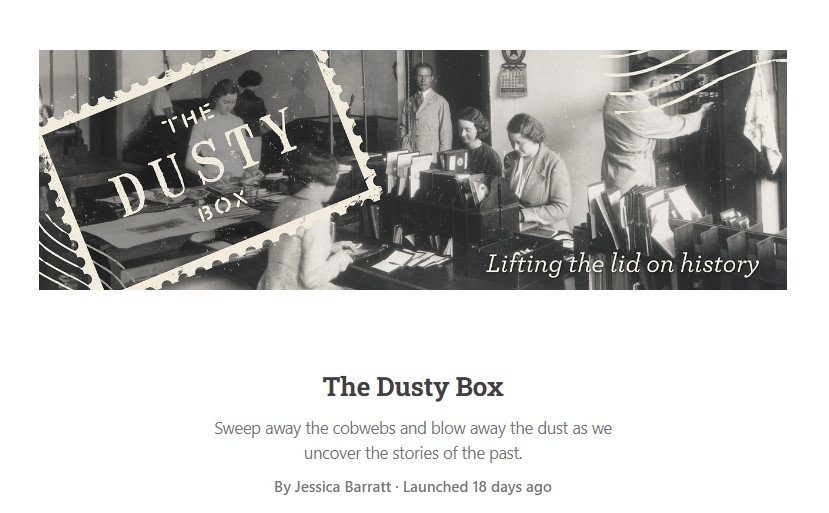2023 is the year I follow my intuition. Initially, this started with regard to stories. When I came across a little-known Sydney story, I decided to follow it. As I researched, the familiar feeling of anticipation washed over me. It was a story I had to write.
I decided The Dusty Box needed a refresh. Searching for a new theme took time. Investigating whether to move to one of WordPress’s full site editor themes took time. Tweaking it took time. Time away from research. Time away from writing. Nothing about my endless clicking felt intuitive. There had to be a better way.
Some people know that podcasting has been at the back of my mind for a while. Again, it’s something that takes time. The initial setup was also very overwhelming. Recording, editing, and finding somewhere to host it. I kept the goal at the back of my mind knowing I would revisit it when I was ready.
I felt stuck, not with writing and research, but with the website. Something wasn’t quite right. At the start of February, a flash of insight hit me: Substack.
I read other writers’ work on Substack, but until that moment, I hadn’t thought of moving there myself. After thinking about it for over a week, I set up an account for The Dusty Box. I wanted to see what it was like.
From the start, everything clicked into place. All the artwork designed for me in 2021 fitted perfectly. I moved my current story into a Substack draft and continued to work on it. I loved how it felt to write. I loved how it looked. I loved that I didn’t have to think about the nuts and bolts of a website. It all felt intuitive.
Substack has the option to add a podcast, so I added it. I thought of the artwork created in 2021 that had been waiting for years (my guilt ever-increasing that I hadn’t used it yet). I downloaded it from my files. Would it work? In a moment, it was uploaded. Again, anticipation rippled through me. It all felt right. I connected it to Apple Podcasts. The Dusty Box podcast was ready to go. I just needed to use my voice.
For the longest time, this, and solely this, has been what I want to do. To write, create, and bring little-known historic stories to life. Another benefit of Substack is that it allows writers to offer paid subscriptions. It means I can provide additional stories and information to those interested in reading more. In saying this, please only take up a paid subscription if you are financially able to. I plan to have plenty of stories available for everyone to read (and listen!).
Finally, the existing stories will remain on this website. Everything new will be on Substack. If you are a current or new reader and would like to receive stories direct to your inbox, please subscribe here: https://thedustybox.substack.com
Thank you always for reading and supporting The Dusty Box. I hope you will join me in a new intuitive space that, I feel, will enable me and my writing to grow.




